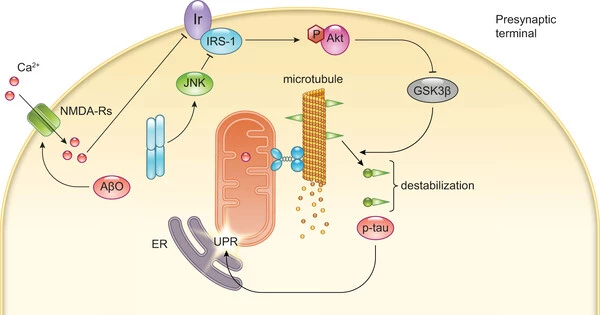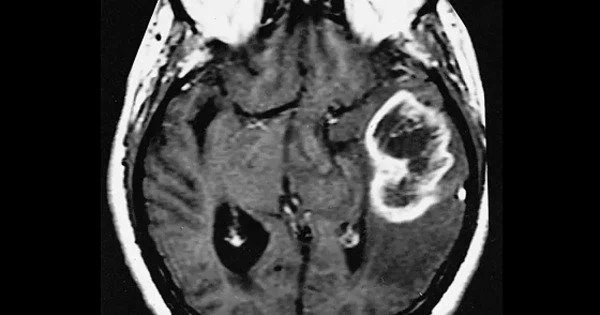Glioblastoma is a particularly aggressive form of brain cancer, and understanding the molecular pathways underlying its development and therapy resistance is an important area of study. Glioblastoma is the most prevalent type of adult brain tumor and, sadly, it is still incurable. According to a new study, a certain mitochondrial protein plays a key role in glioblastoma and might thus be used as a potential target to shrink tumors.
“Glioblastoma is well-known for its lethality.” One of the most difficult aspects is that it spreads invasively across the brain. Brendan Harley (RBTE leader/EIRH), the Robert W. Schaefer Professor of Chemical and Biomolecular Engineering, remarked, “We’re interested in understanding what drives this process in order to identify new therapeutic strategies.”
The mitochondrial coiled-coil-helix-coiled-coil-helix domain containing protein 2 (CHCHD2) was the focus of the current work. The complicated name relates to the protein’s structure, in which the subunits are twisted together like rope strands.
Glioblastoma is well-known for its lethality. One of the most difficult aspects is that it spreads invasively across the brain. We’re interested in understanding what drives this process in order to identify new therapeutic strategies.
Robert W. Schaefer
The researchers initially examined The malignancy Genome Atlas glioblastoma database to see if they could find any patterns linking CHCHD2 levels and malignancy. The CHCHD2 genes were shown to be more expressed in tumor cells than in non-tumor tissue in 577 samples, and to be more expressed in advanced cases of glioblastoma.
“We also discovered that the gene encoding CHCHD2 on chromosome 7 was closely linked to the gene encoding the epidermal growth factor receptor, or EGFR.” “Over 50% of glioblastoma patients have a mutated version of this protein,” said Rex Gaskins (RBTE), the Keith W. and Sara M. Kelley Endowed Professor of Immunophysiology in Animal Sciences and the study’s corresponding author.
When the results from the database showed that CHCHD2 expression was highest in the patients who harbored the mutation known as EGFRvIII, the researchers realized that understanding the interaction between these two proteins can be crucial to understanding glioblastoma progression.

To test their theory, the researchers examined the impact of CHCHD2 on tumor growth in mice. They compared mice with CHCHD2 and the mutated version of EGFR to mice without CHCHD2 but nonetheless with mutated EGFR. The first group of mice lived for an average of 17 days, while the second group lived for 25 days. The researchers discovered that the mice who died earlier had higher tumor development penetrating the surrounding brain tissue.
Although it is known that these proteins interact with one another, it is unclear how they promote glioblastoma growth. Based on their findings, the authors postulated potential mechanisms.
The first possibility is that CHCHD2 reduces mutant EGFR sensitivity to cytotoxic medicines. Despite an array of treatment procedures, including chemotherapy with the medication temozolomide, patients with glioblastoma only live for 15-20 months. The researchers utilized this medication to evaluate cells with both the mutant EGFR protein and CHCHD2, as well as cells with just EGFR. They discovered that when cells lacked CHCHD2, they were more susceptible to temozolomide. The researchers feel that this finding points to CHCHD2 as a possible therapeutic target.
Another possibility is that CHCHD2 affects how EGFR stimulates glioblastoma invasion. Using a hydrogel to replicate the tumor microenvironment in the brain, the researchers showed that cells with both CHCHD2 and mutated EGFR were able to grow and invade the surrounding area. This invasion was especially pronounced when the level of oxygen was lower, a condition commonly experienced by glioblastoma cells as they invade from the tumor into the brain.
The data also demonstrate that CHCHD2 profoundly affects cellular metabolism, which the researchers showed using different biochemical tests. “It’s a multifaceted paper that used patient data, human cell lines, and a mouse model of glioblastoma,” Gaskins said. “All of our data are aligned and we can pursue any one of these mechanisms to see if it explains what is happening in the tumors.”
The researchers want to know why these cells’ invasive capacity changes, especially in low-oxygen environments. They also want to see if these findings hold true in other forms of glioblastomas that do not have a mutant EGFR.
“This study suggests that the role of CHCHD2 in glioblastoma progression was underappreciated, but it might be a significant new target as we try to improve clinical outcomes,” Harley said in a statement. “The idea that this protein can change its behavior based on its surroundings is intriguing.” We anticipate that researchers will be able to develop novel therapeutic techniques based on this critical protein.”
















